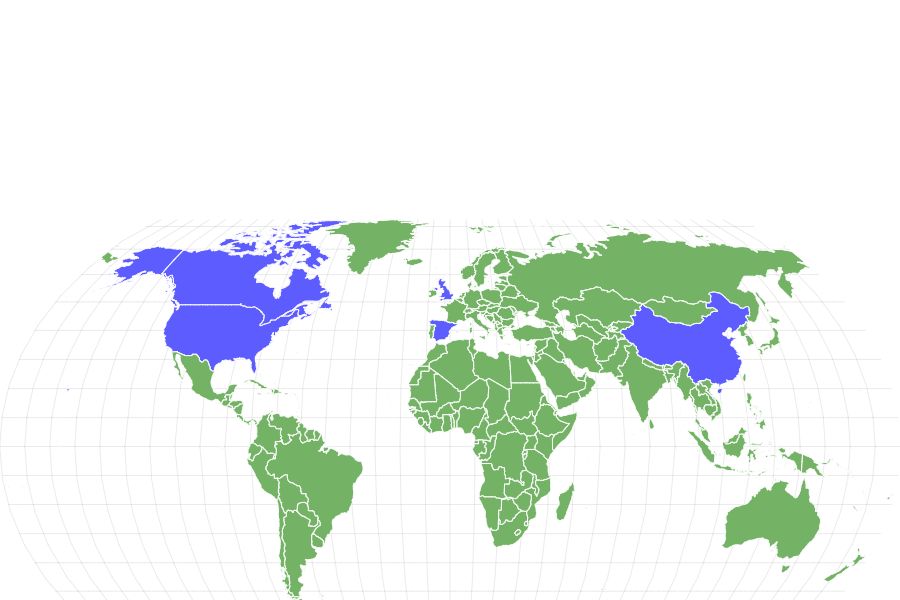Unlike modern lions, cave lions didn't have a significant mane.
Advertisement
Cave Lion Scientific Classification
Read our Complete Guide to Classification of Animals.
Cave Lion Conservation Status
Cave Lion Facts
View all of the Cave Lion images!

Description and Size
The cave lion is an extinct species that resembled, but was distinct, from the modern lion. Cave drawings of the lion give some idea of what they may have looked like.
For example, cave drawings that date back over 15,000 years suggest that make cave lions did not have a significant mane and they may not have had one at all.
It is believed that the cave lion may have been one of the largest species of lions, with a shoulder height of nearly 4 feet, and a length (excluding the tail) of nearly 7 feet.
They probably weighed over 700 pounds. The muzzle of the cave lion was longer and narrower than modern lions.
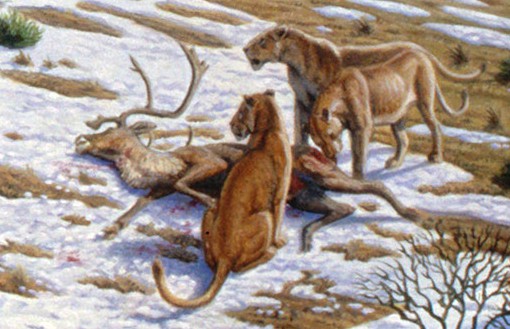
Cave Lions weighed much over 700 pounds. The cave lion’s muzzle was longer and narrower than those of modern lions.
©Mauricio Antón, CC BY 2.5, via Wikimedia Commons – License
Different Types
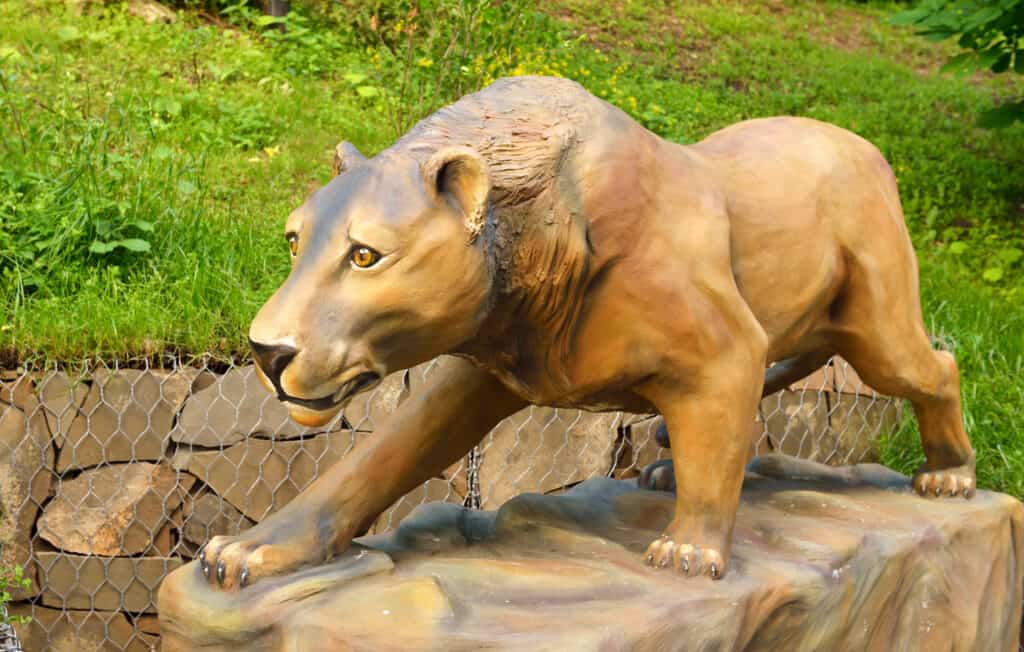
There were three types of cave lions, or Panthera.
©Popova Valeriya/Shutterstock.com
There were three different species of cave lion or Panthera. They were Panthera spelaea, Panthera leo fossilis, and Panthera atrox. Panthera spelaea is also known as the European or Eurasian cave lion. Panthera leo fossilis is also known as the Early Middle Pleistocene European cave lion, and Panthera atrox is also known as the American cave lion.
Both the American and Eurasian cave lions descended from the Early Middle Pleistocene European cave lion. Studies of mitochondrial DNA indicate that the Eurasian and American cave lions share a sister lineage. The American cave lion probably developed when cave lions in America became isolated south of the North American continental ice sheet.
What Did Cave Lions Eat?

Reindeer comprised the majority of the cave lions’ food.
©Andras Deak/Shutterstock.com
The majority of the cave lions’ diet was made up of reindeer. They would occasionally make a meal of young bear cubs, but they were much more finicky than modern lions, which eat whatever they are able to catch.
Habitat
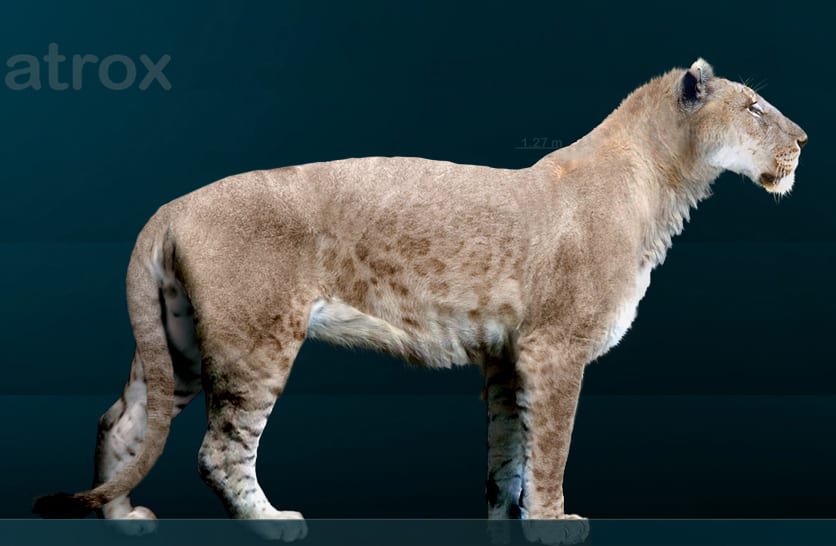
The cave lion had a huge range, it made its home in Canada, Alaska, Spain, and even Eurasia.
©Sergiodlarosa / CC BY-SA 3.0 – License
The cave lion had a huge range. It made its home from Canada and Alaska across the Bering land bridge, throughout the mammoth steppe, which ran from Spain across Eurasia and from the Arctic Circle south to China. This included the Iberian Peninsula, Great Britain, Southeast, and Central Europe, northern Eurasia, and the East Europe Plain.
Despite the name, it isn’t believed that cave lions lived in caves. They probably lived in the open, much like members of the modern-day Panthera genus.
Predators and Threats
The cave lion had no natural predators other than prehistoric humans. There is evidence that the cave lion was hunted and skinned for their pelts, which may have led to their extinction.
Discoveries and Fossils: Evolution
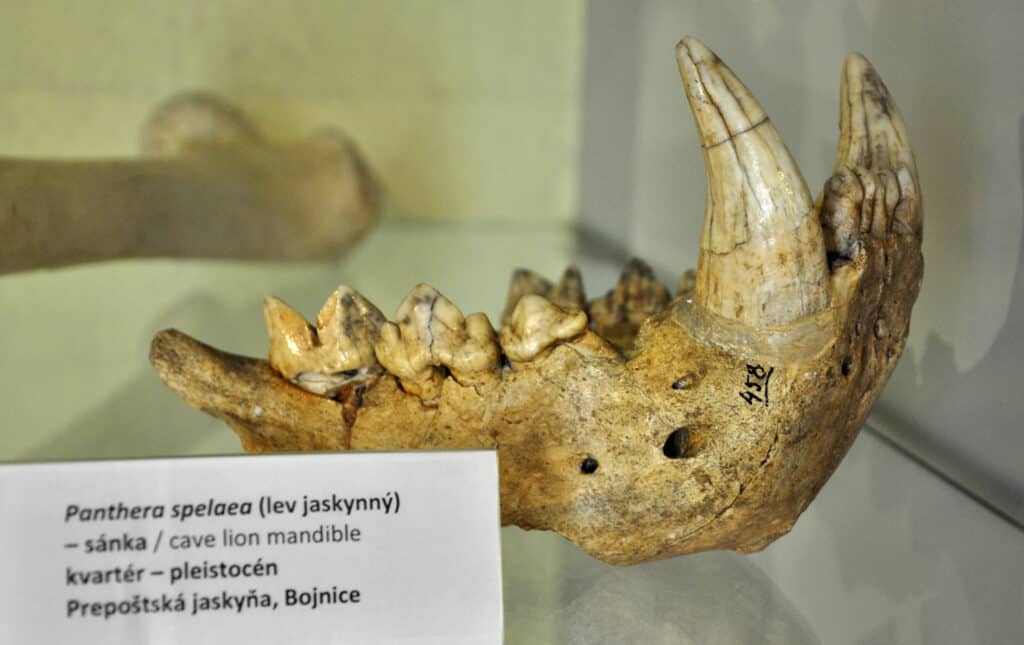
In Yakutia, Siberia, a pair of cave lion cubs were discovered in permafrost. They were buried by a landslide.
©Milan Rybar/Shutterstock.com
A pair of cave lion cubs were found in permafrost in Yakutia, Siberia. It is believed they were buried by a landslide, which allowed them to be surprisingly well preserved. It is estimated that these cubs were between 25,000 and 55,000 years old.
Other frozen specimens have been found in similar areas. Researchers determined through carbon dating that two cubs found approximately 50 feet apart and presumed to be siblings actually lived around 15,000 years apart.
The first fossils of the American cave lion were found in 1830. It was a partial jawbone and was discovered in Mississippi. The next fossils weren’t recovered until 1907. Although they weren’t identified as belonging to the American cave lion until 1907, they were discovered in 1803 in Alaska.
Over 80 individual cave lion fossils were recovered in La Brea, California through the early and mid-1900s.
Extinction: When Did They Die Out?
It is hard to determine exactly why the cave lion became extinct. It is known that prehistoric humans hunted the cave lion for its pelts. It is possible that the hunting pressure on these animals drove them into extinction.
Similar Animals
The cave lion is in the genus Panthera, which includes the modern-day lion, jaguar, tiger, and leopard. Some researchers, after studying the skull shapes of different members of the Panthera genus, believe the cave lion may be more closely related to modern-day tigers than modern lions.
Animals That Lived at the Same Time

They were distinguished by their curved canine teeth, which were evident even when the mouth was closed. Found almost everywhere during the same time as cave lions.
©Daniel Eskridge/Shutterstock.com
Other animals that lived alongside cave lions included saber-tooth tigers, woolly mammoths, cave bears, and steppe bison.
- Saber-Tooth Tigers – Recognizable by their curved canine teeth that were visible even when the mouth was closed. Found nearly worldwide.
- Woolly Mammoths – Approximately the same size as African elephants, with a double coat of long guard hairs and dense undercoat.
- Cave Bears – Found in Europe and Asia. Similar in appearance, although larger, than modern brown bears.
- Steppe Bison – Similar in appearance to modern bison, the steppe bison was over 6 feet tall at the shoulder, and the tips of the horns were over 3 feet apart.
Cave Lion FAQs (Frequently Asked Questions)
When did cave lions live?
The cave lion lived between 370,000 and 10,000 years ago. The period in time runs from the Early to the Middle Stone Age.
How big were cave lions?
Cave lions were larger than modern-day lions. They were nearly 4 feet tall at the shoulder, and from the tip of their nose to the end of their back, excluding their tail, they were nearly 7 feet long.
Were cave lions bigger than modern lions
Yes, they were around 10 to 12 percent larger than modern lions.
What did cave lions look like?
Their muzzles were longer and more narrow than modern lions. Although they did not have a large mane, the males may have had a slight collar of longer hair around the neck. They may have also had stripes, as indicated in various cave drawings.
How did cave lions go extinct?
Researchers are not sure, although they know that early humans hunted them for their pelts. The cave lion also figured frequently in cave drawings, indicating that they were an animal of some importance to humans who shared their habitat.
Thank you for reading! Have some feedback for us? Contact the AZ Animals editorial team.
Sources
- Britannica, Available here: https://www.britannica.com/animal/cave-lion
- New World Encyclopedia, Available here: https://www.newworldencyclopedia.org/entry/Cave_Lion
- Southampton AC, Available here: https://www.southampton.ac.uk/~cpd/history.html
- Science , Available here: https://www.science.org/content/article/dissecting-cave-lion-diet

